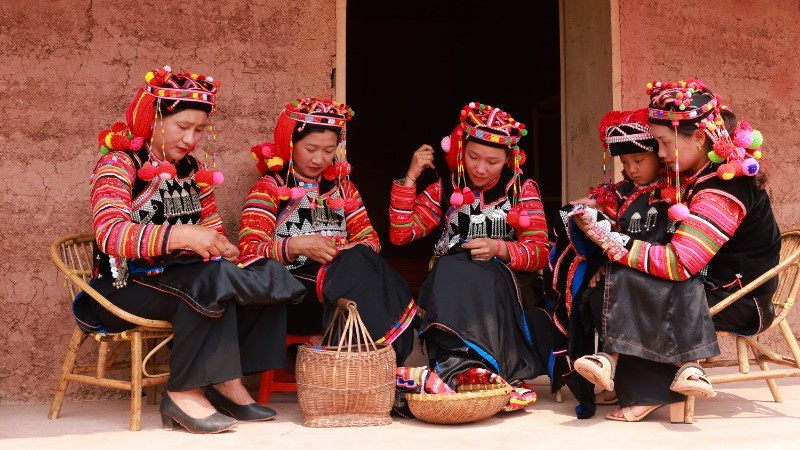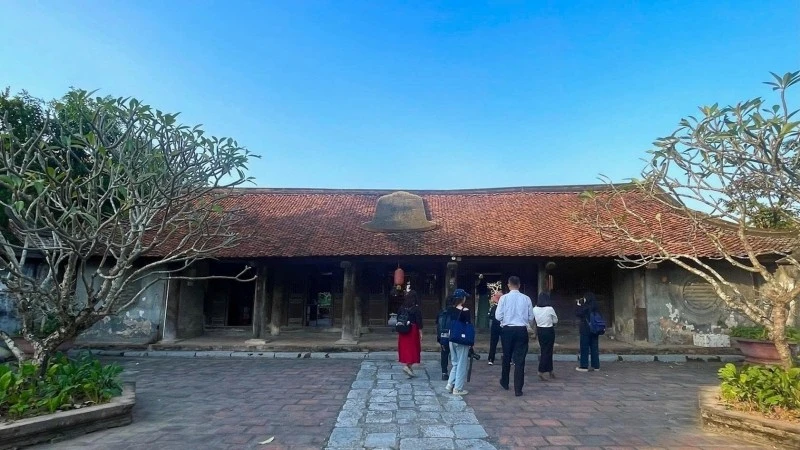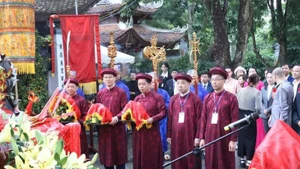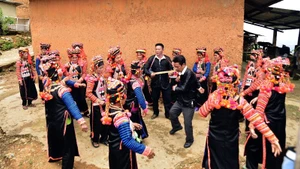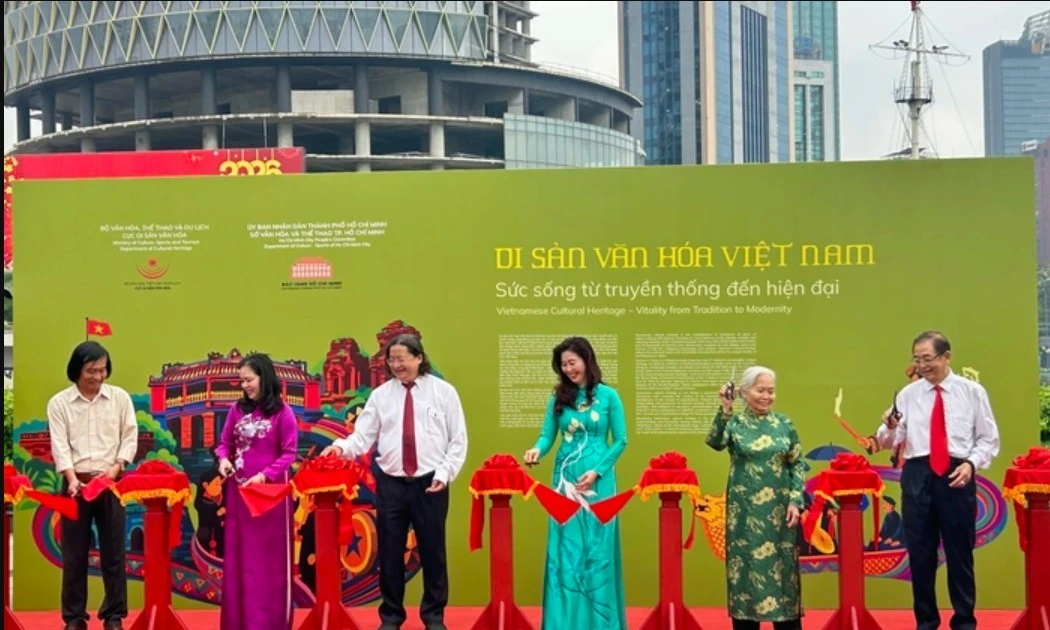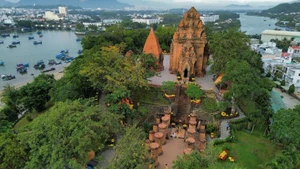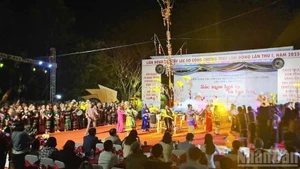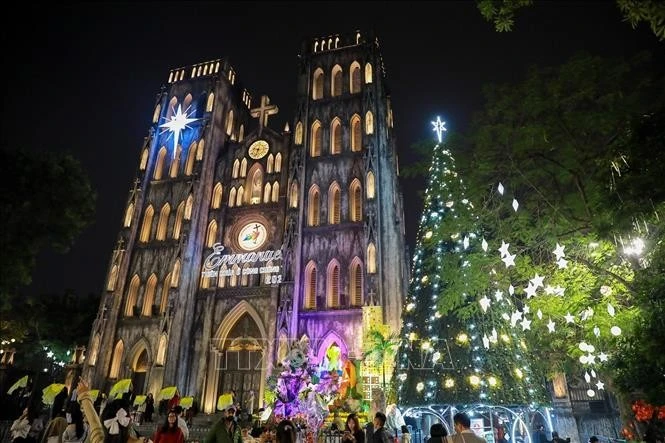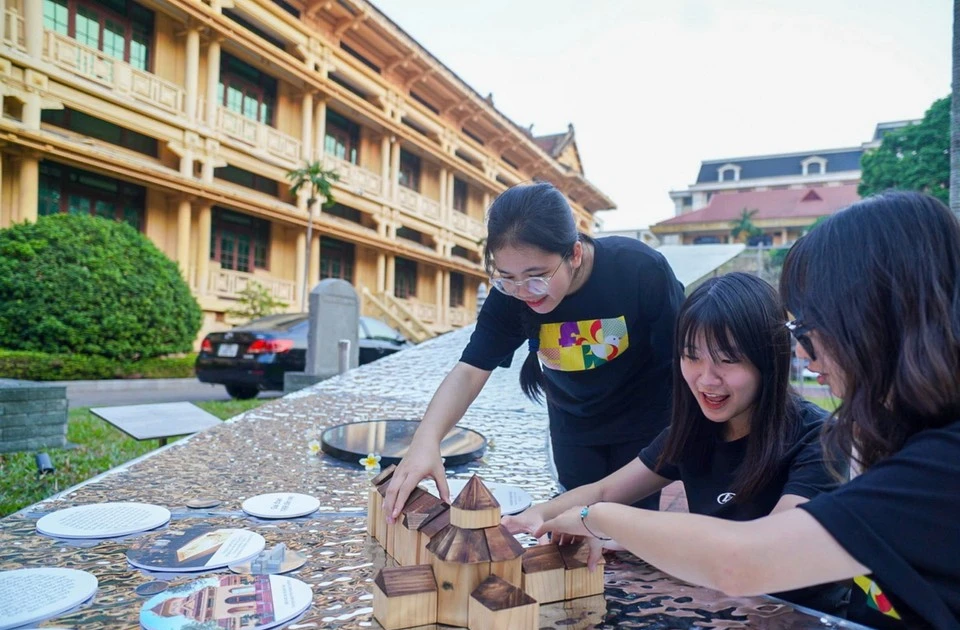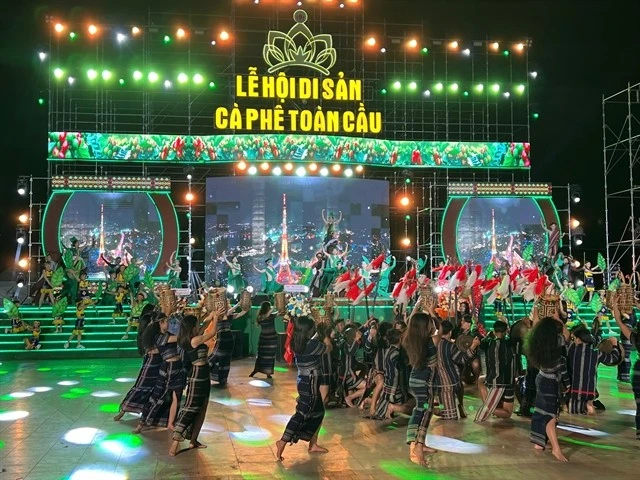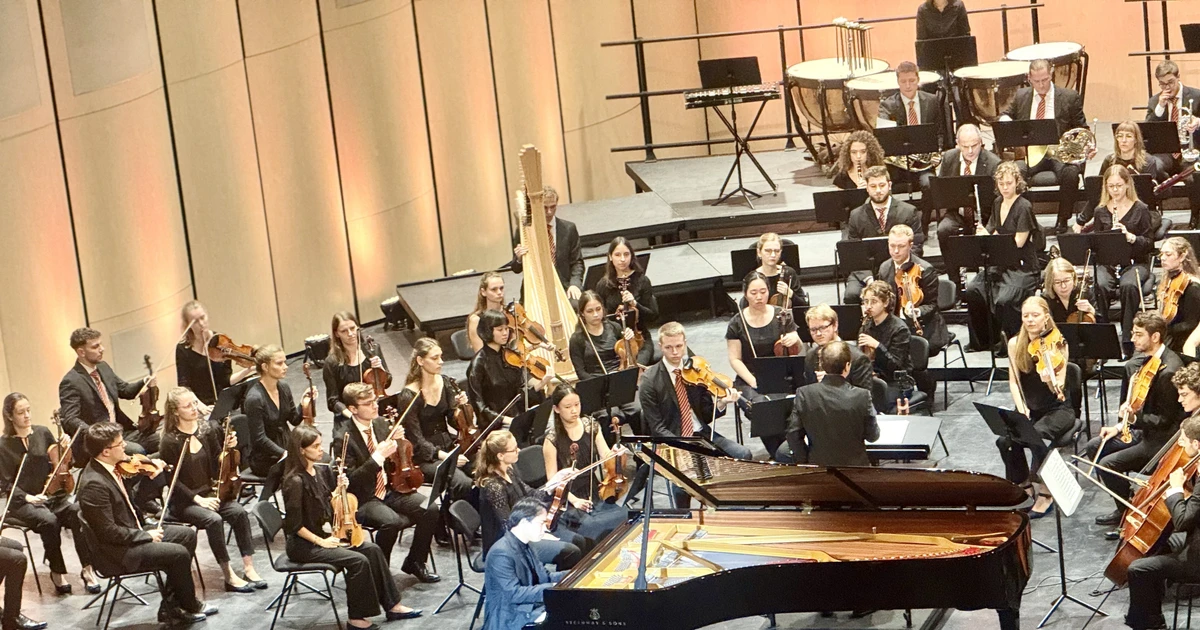Ha Nhi ethnic women keep the traditional cultural flame alive
The Ha Nhi ethnic people regard the forest as their fresh air and livelihood source, protecting the sacred woods as their lifeblood. They believe the forest has a soul and must not be cut down or hunted, forming a lifestyle in harmony with nature, morals, and enduring values. This belief also lays a firm foundation for cultural preservation and opens the path to sustainable development.
Locals in Sin Thau have turned their traditional ‘trinh tuong’ (earthen) houses into homestays welcoming guests, with Ha Nhi ethnic women playing a pivotal role in preserving traditional culture and promoting tourism.
Women handle everything from preparation and cooking to introducing their ethnic customs and performing folk songs and dances. Traditional attire, handcrafted by the women themselves, have become valuable tourism products, rented by visitors to wear in photoshoots and festivals.
Women also keep the cultural flame alive by passing down their ethnic heritage through generations.
According to Po My Le, Deputy Secretary of Sin Thau commune’s Party Committee, a complete outfit can take more than three months to make by hand, with the price can reach 6-7 million VND.
“These attire represent not only monetary value but also ethnic pride,” she stressed.
The attire supports the spiritual life during Tet (Lunar New Year) and ancestor worship ceremonies, village festivals, and also attracts tourists, helping them connect more closely with Ha Nhi culture.
The commitment to preserving tradition among the Ha Nhi ethnic community is shown in the way generations continue learning embroidery, tailoring, ancestor worship customs, and making sticky rice cakes for Tet, as well as in family and village interactions.
Many visitors to A Pa Chai, whether touring villages or staying in homestays, are deeply impressed by the vibrant yet simple and harmonious clothing of Ha Nhi women.
Po My Le recalled the first outfit her mother made for her when she was seven: “It was a red skirt and top with embroidered patterns on the cuffs and an indigo-edged scarf. My mother told me that Ha Nhi girls must wear their traditional attire when they start school, so they never forget who they are.”
From then on, she learned embroidery and later made clothes for her own daughter. This tradition quietly continues across generations like a silent stream through the great forest. Every grandmother and mother is a teacher, educating children with words and actions—from maintaining ancestor worship customs and making Tet rice cakes to proper behaviour within the family and the village.
The commitment to preserving tradition among the Ha Nhi ethnic community is shown in the way generations continue learning embroidery, tailoring, ancestor worship customs, and making sticky rice cakes for Tet, as well as in family and village interactions. Although modern life gradually reaches the village, many young people proactively learn traditional crafts to preserve their ancestors' culture and develop tourism.
Leveraging culture as a source for tourism development
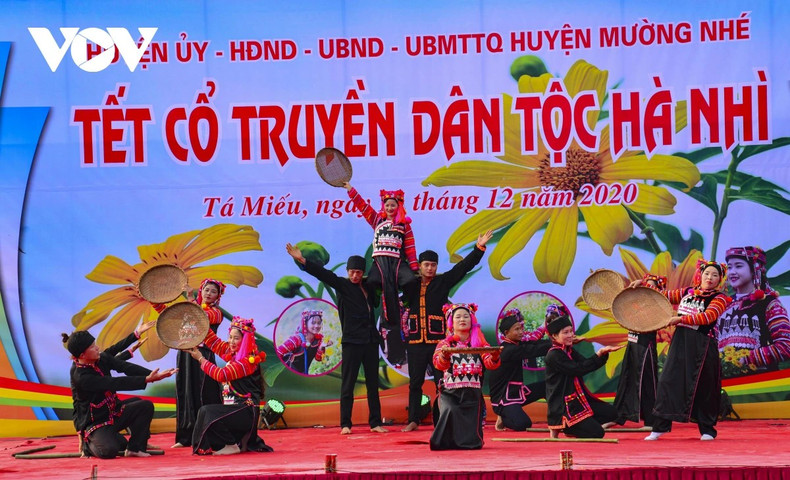
The art of making traditional attire by the Ha Nhi ethnic group was recognised as a National Intangible Cultural Heritage in 2023, providing strong motivation for Ha Nhi ethnic women to preserve and spread culture through each handicraft product, fabric weaving, and folk art performances.
Given this, the Sin Thau communal authorities have worked with social organisations to offer vocational courses and provide materials so women can preserve their identity while creating valuable tourism products.
Handicrafts such as shirts, scarves, bags, and hats are sold to domestic and international visitors, helping generate income and keeping traditional culture vibrant in modern life, while raising locals’ awareness that tourism is a new way of preserving culture.
Visitors to Sin Thau can enjoy traditional culinary experiences with signature dishes prepared by local women, such as rice cakes, smoked meat, and forest leaf soup.
Women and girls in Sin Thau learn to cook traditional dishes and simultaneously create videos to spread their culture on social media, demonstrating modern integration without losing their roots.
They naturally become “tourism ambassadors,” promoting local culture beyond the community.
Community-based tourism in Sin Thau is not just about beautiful homestays but a vivid story behind every roof, inviting visitors to slow down amid nature, listen to ancient songs, pound rice cakes themselves, wear hand-embroidered dresses, and feel an untouched culture.
According to experts, community-based tourism cannot develop spontaneously but requires planning, strategy, and people who deeply understand local culture. Authorities, social organisations, and cultural experts must accompany and support the community to confidently and proactively step forward from their traditions.
Short training courses on tourism, homestay management, communication skills, and local product promotion have been organised for Ha Nhi women, helping them become "professional hosts," welcoming guests to the commune.
Community-based tourism in Sin Thau is not just about beautiful homestays but a vivid story behind every roof, inviting visitors to slow down amid nature, listen to ancient songs, pound rice cakes themselves, wear hand-embroidered dresses, and feel an untouched culture.
Reviving festivals, preserving folk songs, and maintaining embroidery crafts must go beyond formality and live in everyday life, so that culture truly becomes a tourism resource.
The Ha Nhi people do not need to become professional tour guides; they only need to be natural, proud, and open. Stories told by elders, mothers teaching children embroidery, and children singing folk songs are enough for visitors to feel the soul of the land.
When community-based tourism is developed correctly, it helps people avoid migrating to find livelihoods far away, but instead leverage their traditional culture into new sources of life and a catalyst for tourism development. The quiet flames nurtured for generations are lit anew with hope for a new path for the Ha Nhi ethnic people to advance through effort and deep pride amid the peaceful, dense forest.
